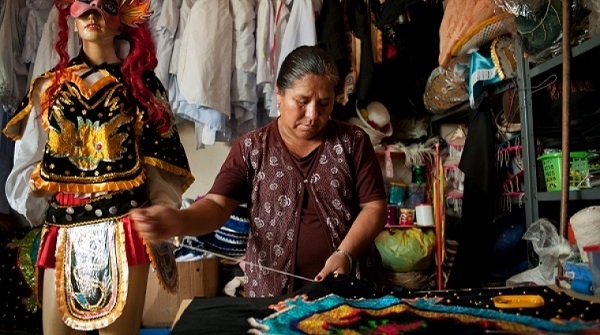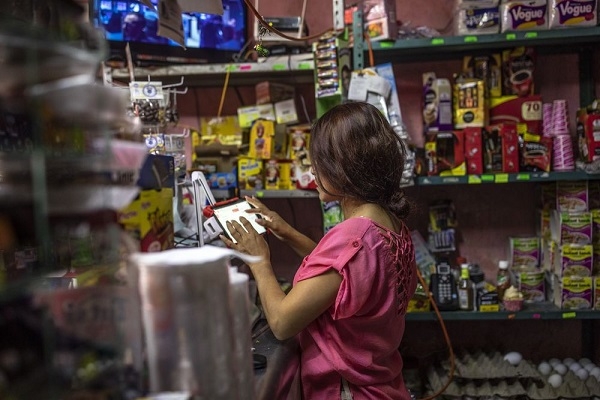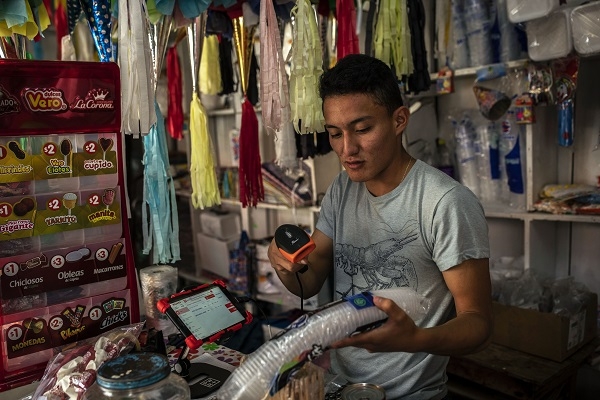Post Coronavirus 'new normal'- Restructuring the Global Economic Order- Part 3
17 Aug 2020 12:37:44
Latin America & Caribbean
The COVID-19 pandemic will herald the worst economic contraction in the history of Latin American and the Caribbean, with a projected -5.3 per cent drop in activity this year, according to a report by the UN office for the region, ECLAC, published recently. The effects of Covid-19 will cause the biggest recession that the region has suffered since 1914 and the Great Depression in 1930, when there was a -5.0% drop in growth. Prior to the pandemic, the region had reported nearly seven years of low growth, averaging less than 0.5 per cent. The impacts of Covid-19 include a reduction in international trade, falling commodity prices, lower demand for tourism services and a drop in remittances, sent home from workers abroad.
The report projects that South America will contract -5.2 per cent because several countries will be affected by lower activity by consumers in China, an important market for exports. Central American countries will experience a -2.3 per cent decline due to reduced economic activity in the United States, which is both a main trading partner and remittance source. Meanwhile, the Caribbean will see a -1.5 per cent drop brought on by decreased demand for tourism services. Unemployment is forecast to reach roughly 11.5 per cent, up from 8.1 per cent last year. This means the number of people out of a job would rise to nearly 38 million.

Small and medium-sized enterprises (SMEs) provide more than 50 per cent of jobs in formal employment, thus increasing the “negative impact” on a sector already battered by the crisis. ECLAC added that “gender inequality will accentuate with measures such as school closures, social isolation and greater numbers of people who are ailing, since the burden of unpaid work borne by women will increase.” Unemployment and the decline in economic activity will also have a knock-on effect on household incomes and the ability to meet basic needs. The report anticipates that the poverty rate will rise by nearly 4.5 percentage points this year, meaning nearly 30 million more people across the region will find themselves in “situations of poverty”. An additional 16 million will join the ranks of the extreme poor.
With a national lockdown declared in March 2020, in an attempt to limit the spread of Covid-19; it’s clear that the UK is headed for the deepest recession known for a long time, and the British government debt is expected to reach the highest level since World War II. The economy shrank by 2% in the first quarter of 2020 and corona virus forced the UK into lockdown and economists expect an even bigger slump in the current quarter. Chancellor Rishi Sunak has said that, "It is now very likely that the UK economy will face a significant recession this year, and we're already in the middle of that as we speak." The Office for National Statistics (ONS) said there had been "widespread" declines across the services, manufacturing and construction sectors. This includes a record 1.9% fall in services output, which includes retailers, travel agents and hotels. Household spending shrank at the fastest pace in more than 11 years as restaurants and high street shops remained shut.
The Bank of England has warned that the UK economy is heading towards its sharpest recession on record. The coronavirus impact would see the economy shrink 14% this year, based on the lockdown being relaxed in June. Scenarios drawn up by the Bank to illustrate the economic impact said Covid-19 was "dramatically reducing jobs and incomes in the UK". Bank governor Andrew Bailey has described the downturn as "unprecedented", and said consumers would remain cautious even when lockdown restrictions are lifted. Not all of the economic activity is expected to come back immediately. People are not expected to re-engage fully, and so it's expected that it will be the next summer that activity comes back fully.

It is however expected by analysts that the UK will suffer a double digit drop in GDP in the coming quarter, with the economy likely to suffer its sharpest recession on record this year, even as the lockdown is expected to be completely removed by October 2020. While the economy could shrink by 14% in 2020, it is expected that the downturn will be short and a growth of 15% is predicted for 2021. The Bank of England expects the UK to rebound quickly, returning to its pre-crisis size within two years. However, a cautious estimate is that UK-wide economic activity may be roughly 30% lower while the current social distancing measures are in place. The UK’s own experience of recessions suggest that not only it lost output during the typical recession not recovered, but growth rates after those recessions are generally depressed for a number of years after.
Both international and UK experience therefore suggests that a V-shaped recovery is unlikely and that the contraction in GDP in 2020 will have persistent effects. Deteriorating human capital for unemployed workers, loss of labor market connections, damaged firm and household balance sheets, potentially higher demand for precautionary saving post-crisis, and weaker global trade and investment links are all likely to weigh on future growth. With 57 countries of the African continent area have 110,000 plus COVID infections but the numbers of confirmed cases is growing fast. With quarantine in place to stop the spread of the pandemic, it is feared that two-thirds of the people would go hungry is they are in quarantine for two more weeks. The lowest-income households expected to run out of food and money in less than a week. In Nigeria and Kenya, social media users have admitted that hunger has forced them to violate stay-at-home orders in order to search for food.
Early, decisive action taken by many African governments may have slowed transmission. While it is difficult to measure the precise impact of any single intervention, African Union (AU) member states have yet to document the spiraling caseloads seen in parts of the United States and Europe. The relative youth of the African population may be another advantage. Current data suggest older people infected with Covid-19 are at significantly greater risk of severe illness. In sub-Saharan Africa only 3% of the population are 65 years or older, and 43% are less than 15 years old. However, that healthcare systems in many African countries are ill prepared for a pandemic, with low numbers of healthcare workers and little capacity for providing critical care to the severely ill.
Covid-19 is expected to have a severe economic impact on sub-Saharan Africa. In April the IMF forecast a recession of 1.8% across the region as a whole. The actual economic impact will depend on the duration and extent of the outbreak, not only in Africa but also among its trade-partner countries. Economies that have relied on single export industries will be affected the maximum. The island nations of Seychelles, Mauritius, Cabo Verde, and São Tomé and Príncipe are expected to experience contractions in GDP of between 4.0% and 10.8% – an average drop of 10.8 percentage points from their pre-COVID forecasts – as a result of the effective freeze on global tourism. The region’s oil exporters – Angola, Cameroon, Chad, Congo (Brazzaville), Equatorial Guinea, Gabon, Nigeria and South Sudan – will be hard hit by the fall in oil prices that are caused, in large part, by the demand disruption caused by Covid-19. The mining economies of southern Africa will also struggle. The economies of Congo (DRC), Botswana, Zambia and Zimbabwe all rely on primary mineral products for more than 60% of export revenues and all are forecast to contract by more than 2%.

West Africa, Senegal, Guinea and Côte d'Ivoire are all projected to see GDP growth of more than 2.7% in 2020. In East Africa, Rwanda, Ethiopia and Uganda are forecast to grow at above 3.2%. While these figures represent a drop of 3.8% from earlier growth forecasts; they are significantly less than the 5.2% point drop for sub-Saharan Africa and the 8% point drop for the world’s advanced economies. The common denominator for these countries is the growth model based on domestic consumption; vibrant and healthy private sectors and robust agricultural sectors. While the first two factors enable their economies to flourish despite the disruptions to global supply chains; the agricultural sectors which are considered as essential service is less affected by social distancing norms or governmental lockdown restrictions.
To mitigate the economic impact, central banks across the continent have adopted aggressive monetary policies to boost liquidity in their economies; substantially increasing the funds available to commercial banks and introducing debt-repayment flexibilities. However, despite a rise in financial inclusion in the continent, large part of many economies have a limited exposure to formal financial services and therefore many small businesses and customers can expect only a limited amount of benefits from the central bank policies. As of mid-April the IMF and World Bank announced that official creditors had mobilized US$ 57 Billion to assist Africa in coping with the pandemic and have suggested that private creditors would assist with US$ 13 Billion. The IMF has provided debt relief to 19 countries in sub-Saharan Africa that effectively cancels six months of IMF debt payments owed by these countries so that they can divert financial resources to tackling Covid-19. Further, the G20 Forum has agreed to a one-year suspension of debt repayments from the poorest countries.
However, the complexity of Africa’s debt profile is expected to undermine the effectiveness of these measures. Africa has extensive debts held by a range of creditors from emerging markets to commercial institutions. Creditors are expressing misgivings about blanket debt moratoriums. China, which is the largest single creditor to sub-Saharan Africa is stressing the need for debts to be restructured on a case-by-case basis. Such restructurings demand time and resources that are currently in limited supply and are likely to still count as default events with consequences for credit ratings and future borrowing ability. Sub-Saharan Africa’s recovery from Covid-19 will be slow and uncertain. The IMF may be forecasting growth in 22 of the region’s 49 economies in 2020, but this growth is low, especially on a per capita basis. However, the uncertainty around these forecasts means that the pandemic may well drive some long-term changes that open new opportunities for investors. There will be a renewed focus on encouraging in-country manufacturing and agriculture. The disruption to global supply chains and the impact of depreciating currencies on import costs have re-emphasized the importance of building domestic capacity.
The Covid-19 outbreak has also highlighted the importance of telecommunications, already a sector seeing rapid growth in sub-Saharan Africa. Central banks have sought to encourage mobile money and other digital payment systems as a means of facilitating commerce while maintaining social distancing. The innovation that has been displayed will continue to create opportunities long after the pandemic that prompted it is over. With over 2,24,071 cases of Covid-19 infections reported across the 22 countries of the MENA region; the responses of various governments to this pandemic has been proactive to dull. Some, like the UAE have been ahead of the curve, taking pre-emptive measures to minimize infections; while others like Iran and Turkey have delayed their response in an inadequate, fragmented manner, leading to them becoming epicenters for the spread of the coronavirus.